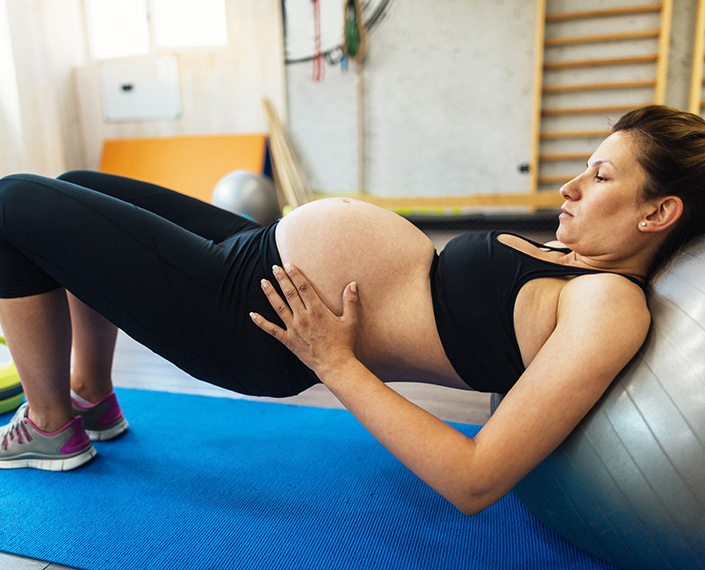‘Active Pregnancy’ Programme

‘Active Pregnancy’ Programme
Prevention, Training and Readaptation Unit
Every pregnant woman should have her physical condition assessed after the first trimester of pregnancy. This is the time to take care of our body, which undergoes so many transformations during pregnancy; to strengthen or tone the pelvic floor, if necessary; or to learn to relax it if that is what the woman needs. Optimising our physical condition during pregnancy will improve our postpartum recovery.
- Pre-pregnancy assessment: The pelvic floor plays an important role throughout a woman’s life due to its physiological functions. When seeking pregnancy, the condition and care for the pelvic floor is an essential pillar. Physiotherapy, using specific diagnostic tools such as ultrasound, manometry, electromyography, among others, will enable the detection of any problem and the establishment of personalised, preventive and therapeutic strategies.
- Pregnancy assessment (from week 12). During pregnancy, due to the growing foetus, the pelvic floor muscles are under constant pressure, at a much higher level than usual. Physiotherapists will assess your pelvic floor from the beginning of your pregnancy to check that you don’t have any dysfunction (incontinence, prolapse, pain, etc.) that may worsen or arise during pregnancy.
- Pelvic floor work during pregnancy: We will prepare and adapt the body for pregnancy over 7 sessions. Through physiotherapy and exercise, the focus will be on being aware and improving the flexibility and strengthening of the pelvic floor, lumbopelvic and abdominal areas in each of the trimesters, in preparation for childbirth.
- Postpartum floor/diastasis Work and Assessment (6 weeks after childbirth): Physiotherapy of the pelvic floor and abdominal girdle in the postpartum period is critical, as they may have been damaged during childbirth and/or pregnancy. Assessment of the pelvic floor is important, with a view to establishing personalised, preventive and therapeutic strategies, using innovative technology, in order to minimise the problem and even avoid it in many cases.

